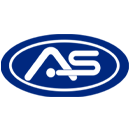
In training to be incorporated the below
Good Manufacturing Practices
- Good Manufacturing Practices related to Products,Processes,Premises,People & Procedures
- Good Manufacturing Practices related to Equipments,Instruments,Materials like Raw material,Packaging material
- Good Manufacturing Practices related to regulatory requirements & cGMP norms
Good Documentation Practices & Data Integrity
- Knowledge of ALCOA+ principle
-
To overcome the Data integrity issues covered -
a) Quality audits, b) Quality documentation,
c) Quality training, d) Cost of Quality, e)Quality standards -
For Awareness and build capabilities for ensuring data integrity - a) Training, b) Internal audits,
c) Upgrading the systems, d) Policies, e) Cultural environment, f) Tone from the top, g) Adequate infrastructure, h) Management support
Quality Culture
- Management expectations from employees in terms of Behavoural,Hygiene
- Management vision,Mission,Cultural environment in organization
- To manufacture the products with inbuilt the Safety,Purity,Efficacy & Quality products
- To maintain the facility with timely preventive maintenance of the equipments,Instruments
- Timely calibration & Qualification of equipments & Instruments
- To keep the online documentation like Logbooks, BMR's, BPR's,SOP's etc
- To maintain the standards with top Pharma companies
- To develop the culture in organization to achieve the goals
- To train the employees related to their job & to verify the effectiveness
Behaviour & Hygiene
- In premises behaviour & to maintain the hygiene
- DO's and DON’T's
- Employees culture development program
- Motivational program
- To reduce the attrition rate
Aseptic Practices ,Microbiology & Sign language
- Personal behavior
- Personal hygiene & cleanliness of areas
- Gowning procedure to Employee for Entry & Exit procedure in Aseptic area
- DO's & DONT's in Aseptic area
- Sign languages to avoid the contamination
- Hand sanitization in Aseptic area
- Hand gloves wearing in Aseptic area
Environment Health & Safety
- Safe and friendly environment for leaarning
- Accident free environment
- Safety,Health environment legal compliance
- Fire fighting system ( Fire extingisher & Hydrant line)
Inspection of Containers like Vial,Ampoule,PFS,Cartridge
- Automatic visual inspection machine Operation
- Manual inspection procedure to operators
- For Automatc visual inspection machine KNAPP kit preparation & KNAPP test,Validation kit,Inspection machine qualification
- Yield improvement on Visual inspection machine
- False rejection control on automatic inspection machine
- For handling of Brevetti / Seidenader machine operator training
Warehouse Management
-
Advantages of Warehouse Management - a) Space utilization b) Effective equipment utilization,
c) Labor utilization, d) Accessibility of all materials - Types of Warehouse
- Inventory control in warehouse & function
- Economic order of quantity
- Inventory level
- Stores management
SAP: MM/PP/QM/PPDS/WM module -
SAP MM:
- Organizational Structure of SAP MM
- Material Master
- Vendor Master
- Purchase Requisition (PR)
- Inventory Management
SAP PP:
- SAP S/4HANA Production Planning Overview
- Master Data for SAP S/4HANA Production Planning
- Prerequisites and Tools for Advanced Planning in SAP S/4HANA
- Demand Management in SAP S/4HANA with Planning Strategies
- Advanced Production Planning in SAP S/4HANA
- Detailed Scheduling in SAP S/4HANA
SAP QM:
- QM Organizational Structure
- QM Master Data
- QM Processes
SAP PPDS:
- Create master data
- Process the Supply Chain Model
- PP planning procedures
- Detailed Scheduling
Deviation,Investigation & CAPA Management
- Deviation management
- Elements of an effective deviation management program
- Deviation flow chart
- How to perform investigation
- Investigation ( Root cause analysis),Corrective and preentive action(CAPA),Effective monitoring,Statical evaluation,Trending of Deviations
- Overview of Quality management system and its continuous improvement
QAMS: Change Control, Devaition, CAPA, Markert complaints, Investigation -
- Defination of Change contol
- Principals of Change contol
- Regulatory requirements
- Steps of Change contol
- Classification of Change contol
DMS: SOPs, Annexures, management of logbooks and format books -
- Aim of SOP
- Objectives
- Benefit
- Purpose
- SOP writing style
- SOP format
- Do's
- Don'ts
- General format for SOP
- SOP Process
- What kind of SOP needed?
- Types of SOP
- SOP Content
- SOP Development
LIMS: Mangement of samples and its Analysis, QC chemicals inventory, trouble shooting and its integration with other modules -
- Basics of LIMS
- The purpose of LIMS
- Implementation
- Advantages of LIMS system
Training: Induction / Dept. / Annual / SOP / Batch record its effectiveness -
- Different types of training in Pharmaceuticals
- Importance of training
- GMP related training
Tech Transfer and product development -
- Importance of Tech transfer
- Pahses of transfer
- For new product development technical guidance
- Regulatory submission timelines & approval
Devlopment of artworks and packing materials -
- Importance of Tech transfer
- Importance of training
- GMP related training
Preparation of Batch records such MFR, MPR, BMR and BPRs.-
- What is batch records
- Importance of batch records
- Different stages in batch records
Electronic batch management and logbook management -
- Importance of eBMR for Pharma E-log management
Regulatory audits handling -
- Guidance for audit prparation
- Mockdrill for Audit & flow to represent to auditors
- Overall audit Compliance & auditors expectations
Apply Here
Quick Enquiry !
For latest update, Please fill up the enquiry form
